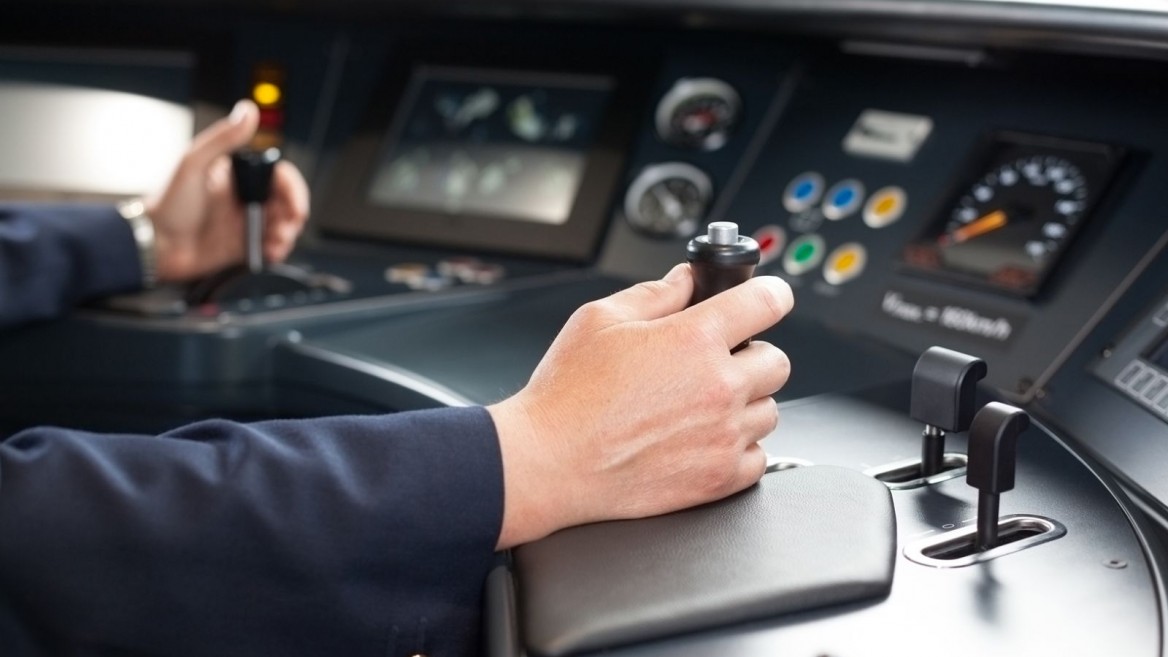Israel’s Rail Safe automated early-warning system uses infrared imaging to alert train engineers to obstacles while they still have time to stop.
As rail travel increases in speed and popularity, so does the potential for death. There is a train accident every 20 minutes somewhere in the world and a growing phenomenon of “rail suicide.”
That’s why Elen Katz, CEO of Israeli startup Rail Safe, sees his revolutionary automated early-warning system as a life preserver.
“This is not another smartphone app,” Katz tells ISRAEL21c. “We are going to save lives.”

(Shutterstock)
Rail Safe is developing its system jointly with Israel Railways, and seeks to raise about $1.5 million to enter the market within 12 to 16 months.
Katz, who previously invented robotic systems for homeland security, was astounded to discover that locomotives lag way behind cars in terms of safety features.
“A car driver is steering one and a half tons at 120 kilometers per hour with four passengers. With the Israeli technology developed by Mobileye, this driver can get aid from a camera and computer to avoid obstacles on the road,” he says. “A train operator is riding tens of thousands of tons at 300 to 400 kilometers per hour, with hundreds of passengers, relying only on what he can see. If he has to think for two seconds he’s already 200 meters ahead. Reaction time is much too slow.”
Many attempts to solve this problem with video cameras failed, Katz says, because they don’t work in nighttime or low visibility conditions.
He decided instead to use infrared cameras that detect objects by the heat they radiate. He gathered a team of former Elbit Systems engineers to build the system.
Drivers love it
Rail Safe’s forward-mounted infrared camera produces a high-resolution image of any obstacle in any conditions from up to two kilometers away — much longer than a train’s 1.5km maximum breaking distance.

The Rail Safe system alerts the driver to obstacles up to 2 kilometers away. (Shutterstock)
Thermal imaging shows the color of the object clearly distinguished from the surroundings, so the driver can easily see if a car, person, animal, mudslide or anything else is obstructing the tracks ahead. Built from off-the-shelf components, the system also alerts the driver in plenty of time to slow and/or stop the train.
Locomotive drivers who first tested the system in Israel loved it, Katz reports.
“Currently, in daytime they can see only 100 meters ahead and at night maybe 30 meters ahead with their headlights. They loved being able to see two kilometers ahead.”
Real-time data produced by the Rail Safe system can also be shared with automated controllers like the ETCS (European Train Control System) which is being deployed by the European Railway Agency to better coordinate the movement and speed of every train on the trans-European rail system.
While ETCS relies on tens of millions of stationary sensors, Rail Safe could provide a dramatically fuller picture of the track environment. This will be even more critical as Europe chugs closer to its goal of driverless trains by 2020, controlled solely by ETCS rather than by human drivers.
“Rail Safe can act as the ‘eyes’ of ETCS,” Katz says.
Testing in Germany and Italy
A major German locomotive manufacturer will soon begin testing Rail Safe with Israel Railways prior to a second phase of testing in Germany. Train Italia is also beginning a Rail Safe test.
Katz explains that particularly in Europe, train travel is competing more and more with air travel by increasing speeds and accommodating more passengers. “It’s safer, you can carry as much luggage as you want, and you can use the Internet throughout your trip,” he says.
But the rise in train travel has come with a concomitant rise in accidents and rail suicides. In the United States in 2014, 2,287 train collisions resulted in 269 fatalities and 849 injuries. In Western Europe, the annual cost of damage from train accidents stands at €2.5 billion.
In France, which has the world’s highest rate of suicide by train, the European Rail Agency is planning an October workshop on reporting and preventing suicides. These tragic incidents have a profound psychological effect on the train drivers involved.
“Nobody wants to come to work and kill people,” Katz says. The ability to see much farther could give them unprecedented ability to avoid deadly collisions.
Accordingly, the four-person Israeli company is being watched closely by the world’s major locomotive manufacturers – none of which is based in Israel, whose rail network is relatively tiny.
“About 18 months ago we introduced ourselves to the international train industry. From manufacturers to operators, they all liked our idea and said only someone from outside the industry would have enough guts to invent a system like this,” says Katz.
By: Abigail Klein Leichman, israel21c.org
Click here for the latest Good News from Israel.
